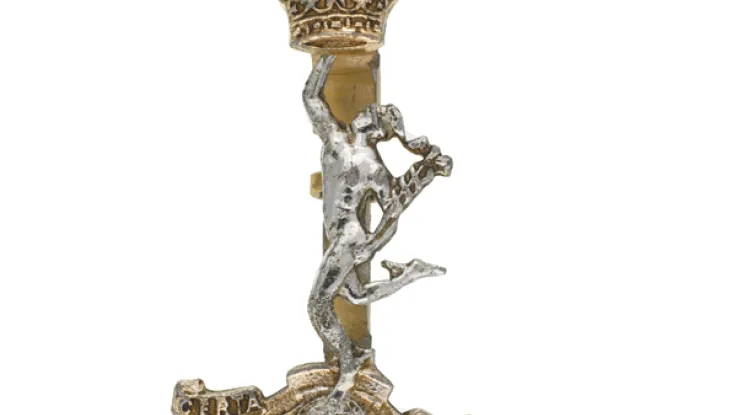Explore more from Regiments and Corps
Corps of Royal Electrical and Mechanical Engineers
2 minute read
Origins
During the Second World War (1939-45), the Army had difficulty providing its men with sufficient training in the maintenance and repair of its increasingly sophisticated vehicles and weapons. It was also impossible to enforce best practices, which resulted in efficiency falling off at a time when a consistently high standard was required.
In October 1942, the Royal Electrical and Mechanical Engineers (REME) was established to meet these technological challenges. This unit of dedicated technicians, mechanics and electricians drew its personnel from the Royal Army Ordnance Corps, the Royal Army Service Corps, the Royal Engineers and the Royal Signals.
Field Marshal Bernard Law Montgomery remarked that REME would ‘keep the punch in the Army's fist’. The unit went on to provide a vital service, keeping the Army moving and fighting in all theatres.
Post-war
By May 1945, the unit had 158,000 officers and men, most of whom had to be released at the end of the war to help revive British industry. In 1948, its work in the war was recognised by having ‘Corps’ officially incorporated into its title. It developed further in the immediate post-war period, taking on nearly all other units’ repair duties in 1951.
Since 1945, REME has played a vital role in all of the Army's operations. It was present in Palestine (1945-48), Egypt (1945-56), Malaya (1948-60), Korea (1950-53), Kenya (1952-56), Cyprus (1954-2014), Northern Ireland (1969-2007), the Falklands (1982), the Gulf War (1990-91), Kosovo (1999), Sierra Leone (2000), Iraq (2003-11) and Afghanistan (2002-14).
It continues to maintain, modify, recover and repair vehicles, trains, tanks, aircraft, firearms and electronic equipment in every theatre in which the British Army is engaged.
Quiz
Which famous company did Major Ivan Hirst of REME take charge of in Germany at the end of the war?
Hirst and REME took over the Volkswagen plant in Wolfsburg in 1945, initially to make and repair cars for the British Army. Eventually, Hirst helped turn Volkswagen into today's well-known brand.
Regimental museums
The National Army Museum works with a network of Regimental and Corps Museums across the UK to help preserve and share the history and traditions of the Army and its soldiers.
Discover more about the Corps of Royal Electrical and Mechanical Engineers by visiting the REME Museum in Chippenham.










